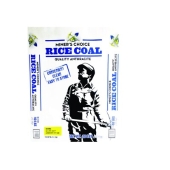posted 9 years ago
My guess would be that most cat litter contains bentonite - that's what they were excavating in the "kitty litter mines" when they found pleiosaur bones a while back.
And it's the easiest clay to make into those little nodules, because it shrinks and cracks readily when it's dried out.
The extreme shrinkage of bentonite is what makes it hard to work with. You have to soak it forever, the clay-slip holds so much water it's translucent, and then you need enough good-quality sand to hold against the terrible strain of that clay trying to shrink back down 20x smaller as it dries. Any of those little nodules that don't get thoroughly smeared out into the sand will want to start a crack as they shrink. Too much bentonite clay, and the project basically rips itself apart and turns back into slightly larger-scale kitty litter as it dries.
Minnesota has a lot of silty soils from the glaciers, but you should be able to find clay pockets.
You could certainly try making test bricks, if you are the "show-me" type. You could have a local kitty litter product that I haven't seen.
But "fire clay," mortar clay, or hobby-potters' discarded raw clay are not that hard to find, and they will most likely give you better return on time and money spent.
Community colleges and ceramics studios are often quite willing to let go of large bins of "recycle clay" for a good cause. (Anything that does not involve paying the art teacher overtime to process porcelain, terra-cotta, stoneware, and miscellaneous discarded tools and bisqueware into a usable, kiln-tested home blend may be considered a "good cause." Bring your own bins. They mostly save out the "recycle clay" to protect the sink drains, re-using the clay for pottery is often a lost cause unless the students are REALLY well trained to grade and separate. But it's great for building projects. Potters who throw on a wheel often have tons of spun-off and trimmings that are likewise mixed and hardened, useless to them, gold for your project.)
If using pure clay, you will only need 6% to 15% of the project's final weight. Depends on the clay, depends on the rest of what's in it (surface areas, etc). But you can make a couple of tote-bins of recycle pottery clay go a long way, sometimes we add less than a half-gallon to each batch, with 3 buckets sand and one bucket of the most "clay-ey" soil you can find locally. (4-5 gallons is a bucket by my measure).
Hope that helps.
If that's not enough "why," then definitely try it and see.
Mix several different proportions with sand, very well. Make bricks using a form (could be a planting pot, filled level to the top) so you can compare before and after to measure drying shrinkage.
There's more detail in the 'mud guide' on our Kickstarter, or in Appendix 1 of our new book (see signature), or in cob builder's handbook (becky bee), or cob cottage company has several titles with general info.






